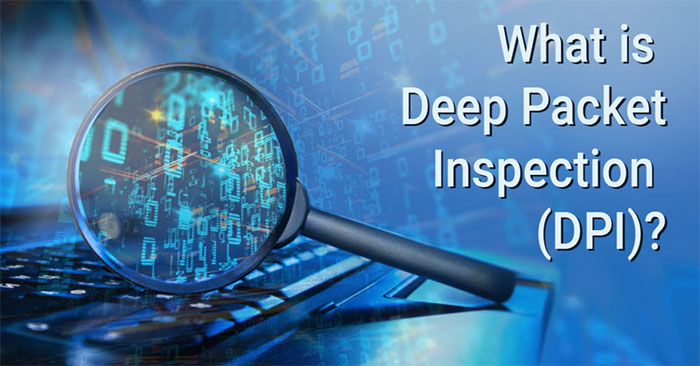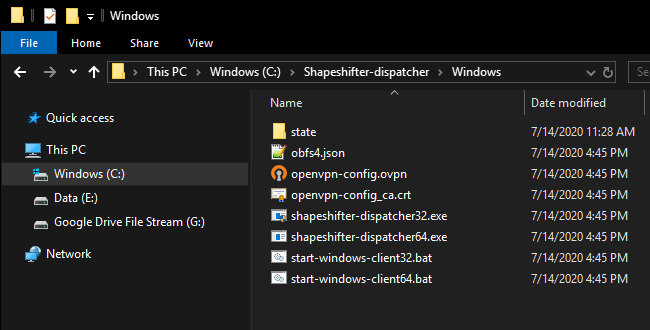Deep packet inspection (DPI) is a powerful network monitoring technique that allows network administrators to examine and manage network traffic. It is an advanced form of packet filtering that can locate, identify, classify, and reroute or block packets with specific data or code payloads that traditional packet filters cannot detect.
The ability to identify and control certain types of traffic can be beneficial for organizations looking to maintain a secure environment. In addition to blocking malicious content, DPI can also be used to enforce censorship and tracking of certain types of traffic. This can help organizations prevent the spread of viruses or other suspicious activity on their networks.
In terms of its technical capabilities, deep packet inspection goes beyond the traditional stateful packet inspection which only evaluates header information such as source IP address, destination IP address, and port number. Deep packet inspection looks at a wider range of data and associated metadata associated with individual packets. This allows for greater control over the type of traffic that is allowed on the network.
In addition to being useful in corporate settings, DPI can also be used by governments for censorship purposes. By using DPI techniques governments can prevent citizens from accessing certain content deemed inappropriate or sensitive in nature. While this type of activity may not always be entirely legal, it does provide organizations with a way to protect their networks from outside threats.
At the end of the day, a deep packet inspection is an invaluable tool for organizations looking to maintain a secure environment while still having access to various types of content on the web. The ability to inspect and control certain types of traffic makes it easier for organizations to protect their networks from malicious activity while still allowing users access to legitimate content they need for their work.

The Benefits and Uses of Deep Packet Inspection
Deep packet inspection (DPI) is a type of network traffic analysis that inspects all data packets passing through a network, including their headers and payloads. It goes beyond the usual packet filtering techniques, which only examine the header information, by examining the actual data or code payload of each packet for malicious or unauthorized content. DPI is used to identify, classify, reroute, and block packets with specific content or code that would otherwise be undetectable by conventional packet filtering. This type of analysis provides an additional layer of security to prevent malicious activities such as malware attacks and unauthorized data transfers. Additionally, it can also be used to optimize network performance by providing more granular control over traffic flows.
The Benefits of Deep Packet Inspection
Deep packet inspection (DPI) is an essential security tool for network administrators. It provides a way to monitor and analyze traffic on a network in order to identify any malicious or suspicious activities. DPI allows administrators to control the flow of traffic within the network, block certain services, and detect any potential threats. Additionally, it can be used to track user behavior, set quotas on bandwidth usage, and ensure that all users are abiding by the organization’s policies. In short, DPI can help protect an organization’s network from hacker attacks, malware infections, unauthorized access attempts, and other malicious activities.
Differences Between Deep Packet Inspection and Stateful Inspection
The main difference between deep packet inspection (DPI) and stateful inspection is the amount of data and metadata they analyze. The stateful inspection looks at only the header information of a packet, such as a source IP address, destination IP address, and port number. In contrast, DPI examines much more data, including the payload and application layer content of each packet. This enables DPI to identify applications, protocols, and behaviors that may be malicious or violate the security policy. Additionally, DPI can monitor performance metrics like latency and packet loss. Ultimately, DPI provides a much deeper level of visibility into network traffic than stateful inspection can offer.
The Effectiveness of Deep Packet Inspection on VPNs
Yes, deep packet inspection (DPI) can work on Virtual Private Networks (VPNs). DPI works by analyzing the packets of data that are sent over the network, and it can be used to identify and block specific types of traffic, such as encrypted packets. This is done by looking at the information contained within each packet, such as its source and destination addresses, port numbers, and other metadata. If a packet matches certain criteria that are associated with a prohibited type of traffic, such as VPN traffic, then it can be blocked. DPI is an effective method for controlling access to networks, however, it is not foolproof and can sometimes fail to detect certain types of traffic.
Can VPNs Be Detected by DPI?
Yes, DPI (deep packet inspection) can detect VPNs. DPI is a method of examining the data packets that travel through a network in order to identify and classify them. It enables network administrators to determine the types of traffic that are flowing through the network, including any traffic associated with a VPN connection. By examining the data packets, it is possible to detect which protocol (such as OpenVPN or IPSec) is being used and block access as needed. As such, DPI can be used to effectively block access to VPN services, even when attempts are made to obfuscate the fact that a VPN is being used.
Types of Deep Packet Inspection
Deep packet inspection (DPI) is a method of examining the contents of data packets as they travel over a network. It enables a firewall or intrusion detection system (IDS) to analyze each packet for malicious content and determine whether it should be allowed to pass through or blocked. DPI can also provide network administrators with detailed information about the traffic on their networks, such as which applications are being used, by whom, and for what purpose.
There are two primary types of deep packet inspection: static DPI and dynamic DPI. Static DPI examines the header information of each packet such as source and destination address, port numbers, and protocol type. Dynamic DPI goes further by inspecting the payload of each packet, allowing it to detect viruses, worms, Trojans, and other malicious software that may not be revealed by looking at the header information only.
Another type of deep packet inspection is application-aware DPI which looks at layer-7 information in order to gain an understanding of the application-level protocols being used. This is used to identify applications such as video streaming services, online chat programs, and peer-to-peer file-sharing services that may be consuming large amounts of bandwidth on the network. With this knowledge, administrators can prioritize certain types of traffic or set limits on how much bandwidth particular applications can use.
Finally, there is content-aware DPI which looks at specific keywords within a network traffic stream in order to detect potential threats. This can help organizations protect their networks from malicious content such as email spam or phishing attacks that could otherwise slip through undetected by traditional security measures.
Classifying Traffic Using Deep Packet Inspection
Deep packet inspection (DPI) is a process used to classify traffic based on signatures contained in data packets, rather than just examining the header information. DPI works by analyzing the data portion of a packet to identify and categorize traffic based on pre-defined rules. These rules are stored in a signature database that contains information about specific types of traffic or applications. This allows for more granular control over what is allowed or blocked than simply looking at header information. In some cases, endpoints can use encryption or obfuscation techniques to evade DPI detection.
Understanding DPI in 5G Networks
Deep Packet Inspection (DPI) is a technology used to analyze the data packets in a network in order to identify, monitor, and control the types of traffic that flow across it. In 5G networks, DPI can be used to identify and prioritize different traffic types based on their specific characteristics. This allows network administrators to ensure that mission-critical applications receive sufficient bandwidth while managing other traffic as needed. Additionally, DPI can help operators understand how their networks are being used, detect anomalies or suspicious activities, and protect against malicious attacks.
Difference Between Firewall and DPI
The main difference between a firewall and Deep Packet Inspection (DPI) is the level of detail in which they can inspect packets. A traditional firewall will only inspect packet headers, while a DPI firewall can analyze the packet data payload as well. This allows a DPI system to identify and block specific types of traffic based on its content rather than just relying on port or protocol information. This allows for more granular control over what is allowed in or out of a network and also helps to protect against malicious attacks. DPI systems are also able to detect malicious activities such as malware transmission, illegal file sharing, and certain types of spam.
Deep Packet Inspection Firewalls
A next-generation firewall (NGFW) is a type of firewall that can perform deep packet inspection (DPI). DPI is an advanced method of packet filtering and analysis that loos inside the packets for information about the content, not just the address and port information. This allows for more granular control over network traffic, as well as better detection of malicious or suspicious activity. NGFWs are capable of inspecting packets in various ways such as looking at header information, payloads, and application data. They can also detect threats by performing signature-based matching and anomaly detection. Additionally, they can take action on suspicious packets such as dropping them or blocking them from entering the network.
Conclusion
In conclusion, deep packet inspection can be a useful tool for organizations and government entities when it comes to monitoring and controlling network traffic. It is capable of locating, identifying, classifying, and blocking or rerouting packets with specific data or code payloads that regular packet filtering cannot detect. It also helps to prevent the spread of viruses or other malicious software from one team member’s computer to the organization’s network. Although DPI is not necessarily legal in all countries, its use can help organizations maintain safety standards and ensure that only appropriate content is accessed.








